

Antarctic

Weddell Seal

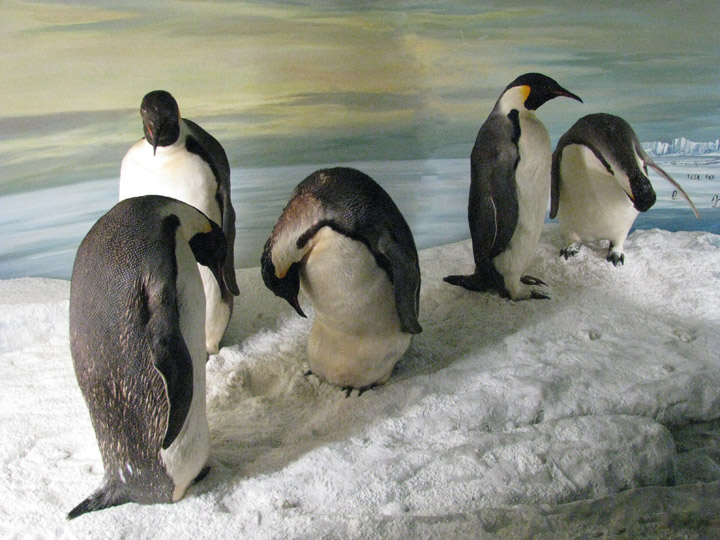
Penguins


Cape Adare is the northeastern most
peninsula in Victoria Land, East Antarctica. The cape separates the Ross Sea to
the east from the Southern Ocean to the west, and is backed by the high
Admiralty Mountains. Cape Adare was an important landing site and base camp
during early Antarctic exploration.
Captain James Ross discovered Cape Adare in January 1841 and named it after his
friend the Viscount Adare (the title is derived from Adare, Ireland).
In January 1895, Norwegian explorers Henryk Bull and Carstens Borchgrevink
landed at Cape Adare, collecting geological specimens. Borchgrevink returned to
the cape leading his own expedition in 1899 and erected two huts, the first
human structures built in Antarctica. The expedition members over wintered and
the survivors were picked up in January 1900. Zoologist Nicolai Hanson died
during the winter and was buried at Cape Adare.
Members of the Northern Party of Scott's Terra Nova Expedition over-wintered at
Cape Adare in 1911 and 1912. They erected one hut, which has fallen into ruin
today.
The Terra Nova Expedition (1910–1913)


The Terra Nova Expedition (1910–1913), officially the British Antarctic Expedition 1910, was led by Robert Falcon Scott who had previously commanded the Discovery Expedition to the Antarctic in 1901–04. The expedition's popular name is taken from its supply ship, Terra Nova. The main objective, as expressed by Scott in his prospectus, was "to reach the South Pole and to secure for the British Empire the honour of this achievement". The expedition had further objectives in scientific research and geographical exploration and, although it was a private venture, it had unofficial blessings from the British Government (which contributed half its costs), the Admiralty and the Royal Geographical Society.
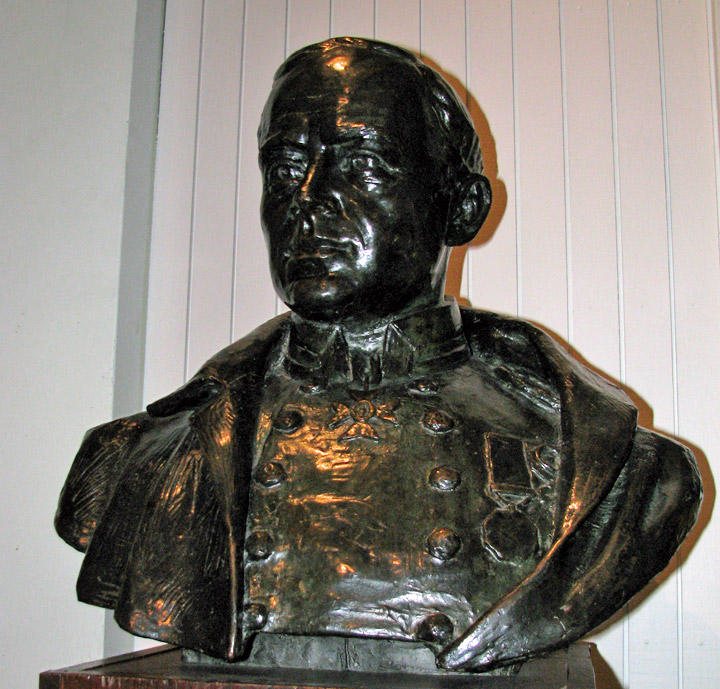
Robert Falcon Scott
The expedition carried out a comprehensive scientific programme, and explored Victoria Land and the Western Mountains. An attempted landing and exploration of King Edward VII Land was unsuccessful. A journey to Cape Crozier in June–July 1911 was the first extended sledging journey in the depths of the Antarctic winter.
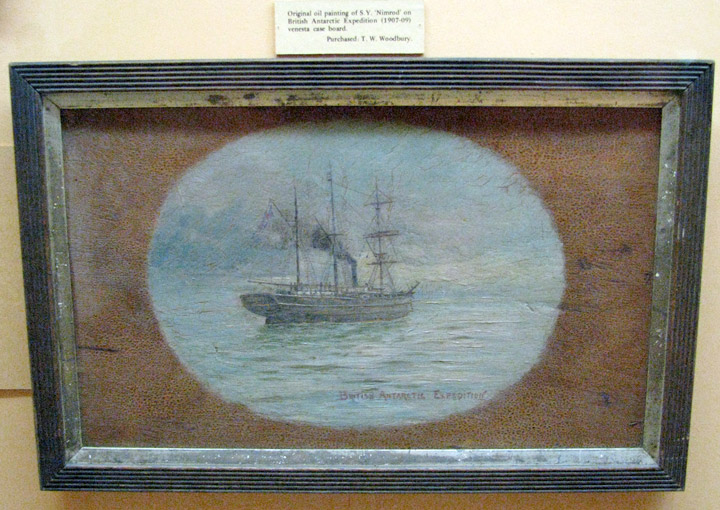
The appearance in the south of Roald Amundsen's Norwegian party turned Scott's
polar quest into a race to reach the South Pole first. In the main journey of
the expedition Scott led a five-man team which reached the Pole on 17 January
1912, to find that Amundsen's team had preceded them. All else, including
Amundsen's achievement, was thereafter overshadowed by the deaths of Scott and
his companions on their return from the Pole. Their records, retrieved by a
search party eight months later, ensured that their story would be known.
Different views have been voiced about the issues that contributed to the
disaster, and the expedition is the subject of continuing controversy, with
Scott personally either vilified or lauded.
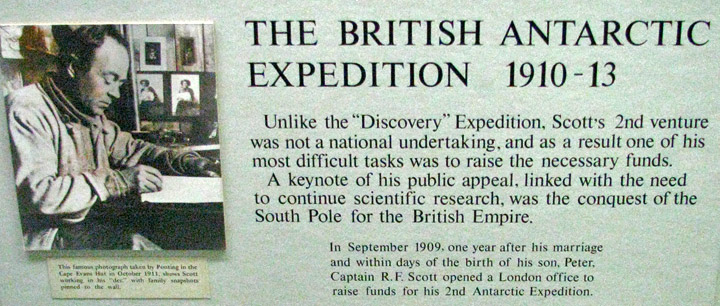
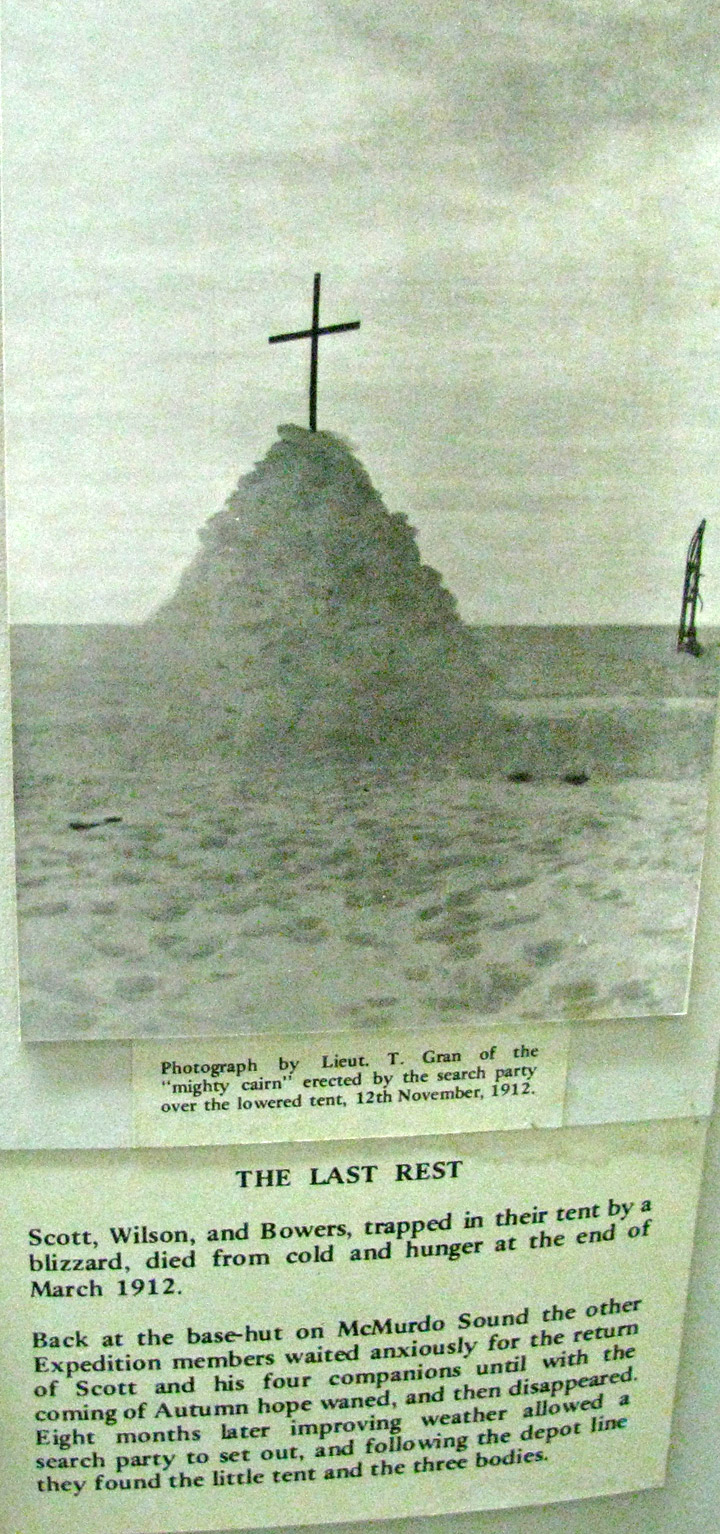

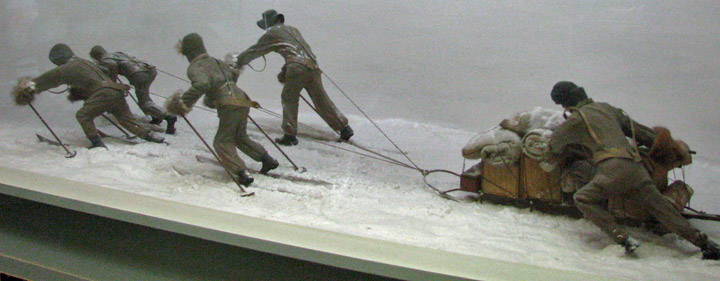
The Imperial Trans-Antarctic Expedition (1914–17)
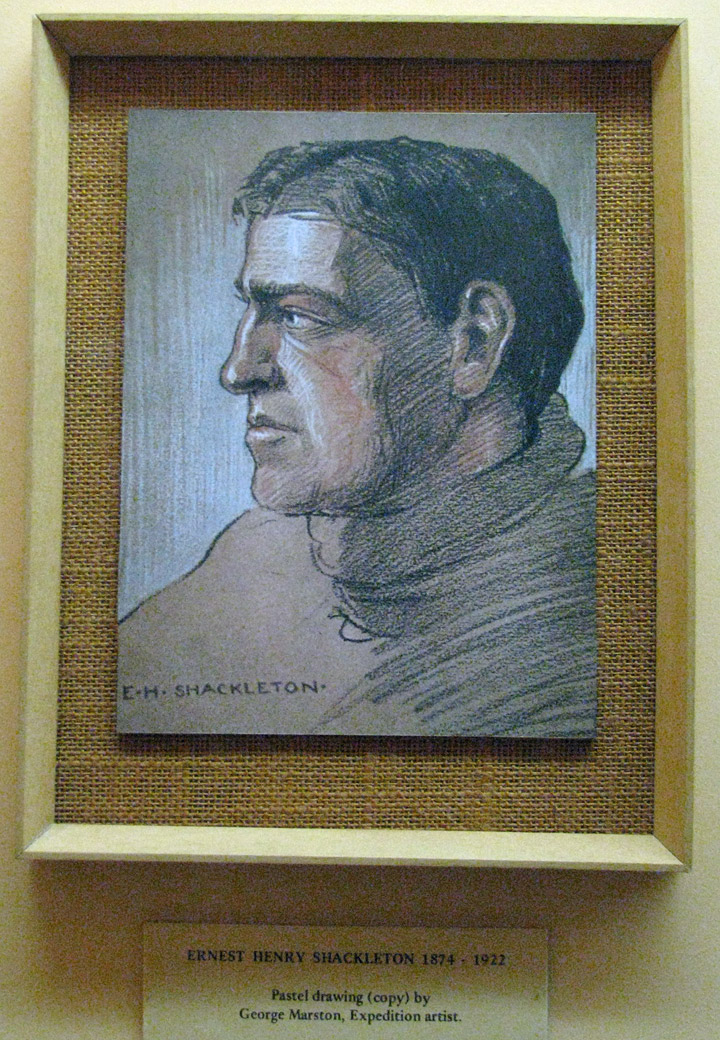
Ernest Henry Shackleton
The Imperial Trans-Antarctic Expedition (1914–17), also known as the Endurance Expedition, was the last major expedition of the Heroic Age of Antarctic Exploration. Conceived by Sir Ernest Shackleton, the expedition sought to achieve the first land crossing of the Antarctic continent. After the conquest of the South Pole by Roald Amundsen in 1911, the crossing remained, in Shackleton's words, the "one great main object of Antarctic journeyings". The expedition failed entirely to accomplish this aim, but it remains memorable as an epic of heroism and survival.

Ernest Henry Shackleton
Shackleton had served in the Antarctic on Captain Scott's Discovery Expedition, 1901–04, and had led the British Antarctic Expedition, 1907–09. The new expedition required a main party to sail to the Weddell Sea and to land a shore party at around latitude 78°S, in the vicinity of Vahsel Bay, in preparation for a transcontinental march via the South Pole to the Ross Sea. A supporting group, the Ross Sea party, would meanwhile travel to the opposite side of the continent, establish camp in McMurdo Sound, and from there lay a series of supply depots across the Ross Ice Shelf to the foot of the Beardmore Glacier. These depots would be essential for the transcontinental party's survival, as they would not carry enough provisions to make the crossing otherwise. The expedition required two ships; the Endurance would take Shackleton's party to the Weddell Sea, and the Aurora, under Captain Aeneas Mackintosh, would take the Ross Sea party to McMurdo Sound.

Endurance became beset in the ice of the Weddell Sea before reaching Vahsel Bay, and despite efforts to free the ship, she drifted northward with the pack throughout the Antarctic winter of 1915. Eventually, the ice crushed and sank the ship, stranding her 28-man complement on the ice and subjecting them to a series of harrowing episodes—months spent in makeshift camps on the ice, a journey in lifeboats to Elephant Island, an 800-mile (1,300 km) open-boat journey in the James Caird, and the first crossing of South Georgia—that led eventually to their rescue without a single fatality. Meanwhile, the Ross Sea party overcame great hardships to fulfill its mission, after Aurora was blown from her moorings during a gale and could not return. The depots were laid, but three lives were lost in the process.
Roald Amundsen's South Pole expedition (1910–1912)

Roald Amundsen
Roald Amundsen's South Pole expedition (1910–1912) was a Norwegian expedition to Antarctica aiming to be the first to reach the South Pole. The expedition was a success, with five of the mission (Amundsen, Olav Bjaaland, Helmer Hanssen, Sverre Hassel and Oscar Wisting) arriving at the pole on December 14, 1911, beating Robert Falcon Scott and his ill-fated party by thirty-four days.
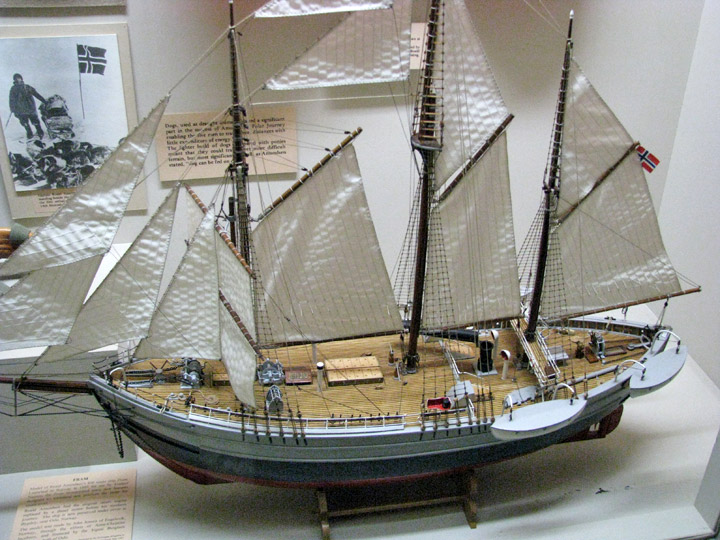
Fram
After crossing the Northwest Passage, Amundsen made plans to go to the North Pole and explore the North Polar Basin. On hearing in 1909 that first Frederick Cook and then Robert Peary claimed the Pole, he changed his plans. Using the ship Fram ("Forward"), earlier used by Fridtjof Nansen, he instead set out for Antarctica in 1910. He states in his book The South Pole that he needed to attain the South Pole to guarantee funding for his proposed North Polar journey. In preparation for the new objective, Amundsen carefully read all the accounts of the previous expeditions to Antarctica. He combined this with his own experiences, both in the Arctic and the Antarctic, in planning for the southern expedition.
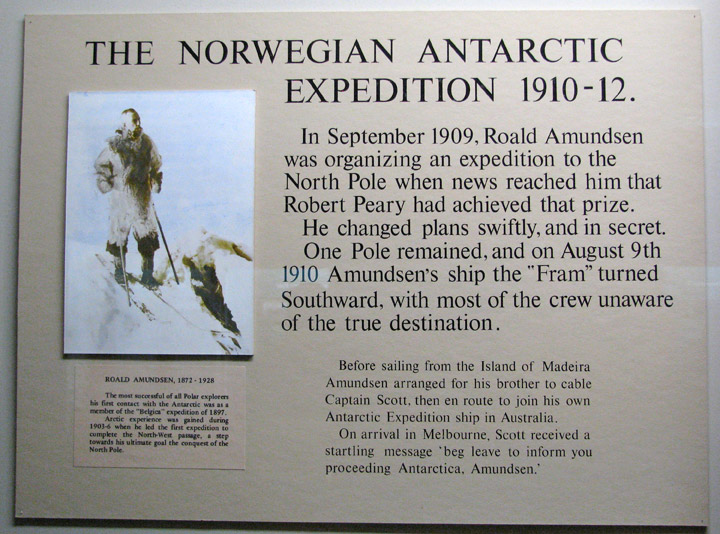
Amundsen told no one of his change of plans except his brother Leon and Thorvald
Nilsen, commander of the Fram. He was concerned that Nansen would rescind use of
Fram if he learned of the change. (In fact, Nansen supported Amundsen fully.)
Also, he probably didn't want to alert Robert Falcon Scott that he would have a
competitor for the pole; Scott later said that Amundsen's presence had no effect
on his own plans for the Pole. The original plan had called for sailing Fram
around the Horn to the Bering Strait. Amundsen waited until Fram reached Madeira
to let his crew know of the changed plan. Much to his relief, every member
agreed to continue. Leon made the news public on October 2. While in Madeira,
Amundsen sent a telegram to Scott, notifying him of the change in destination:
"BEG TO INFORM YOU FRAM PROCEEDING ANTARCTIC -- AMUNDSEN".
Rear Admiral Richard Evelyn Byrd, Jr., USN

Richard Evelyn Byrd
On May 9, 1926, Byrd and pilot Floyd Bennett attempted a flight over the North Pole in a Fokker F-VII Tri-motor called the Josephine Ford. This flight went from Spitsbergen (Svalbard) and back to its take-off airfield. Byrd claimed to have reached the Pole. This trip earned Byrd widespread acclaim, including being awarded the Medal of Honor (back when this medal was awarded for things other than superior valor in battle), and enabled him to secure funding for subsequent attempts to fly over the South Pole.
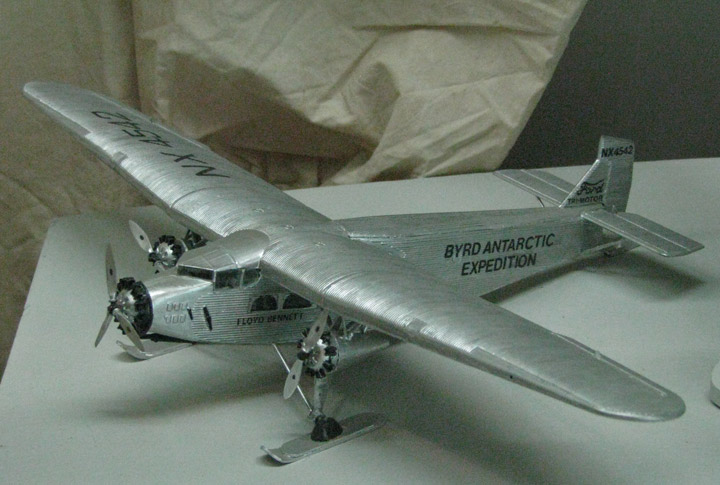
In 1928, Byrd began his first expedition to the Antarctic involving two ships, and three airplanes: a Ford Trimotor called the Floyd Bennett (named after the recently deceased pilot of Byrd's previous expeditions); a Fairchild FC-2W2, NX8006, built 1928, named "Stars And Stripes" (now displayed at the Virginia Aviation Museum, on loan from the National Air and Space Museum); a Fairchild called the Virginia (Byrd's birth state). A base camp named "Little America" was constructed on the Ross Ice Shelf and scientific expeditions by dog-sled, snowmobile, and airplane began. Photographic expeditions and geological surveys were undertaken for the duration of that summer, and constant radio communications were maintained with the outside world. After their first winter, their expeditions were resumed, and on November 29, 1929, the famous flight to the South Pole and back was launched. Byrd, along with pilot Bernt Balchen, co-pilot/radioman Harold June, and photographer Ashley McKinley, flew the Ford Trimotor to the South Pole and back in 18 hours, 41 minutes. They had difficulty gaining enough altitude, and they had to dump empty gas tanks, as well as their emergency supplies, in order to achieve the altitude of the Polar Plateau. However, the flight was successful, and it entered Byrd into the history books. After a further summer of exploration, the expedition returned to North America on June 18, 1930. A 19 year-old American Boy Scout, Paul Allman Siple, was chosen to accompany the expedition. Unlike the 1926 flight, this expedition was honored with the gold medal of the American Geographical Society.
Text from Wikipedia
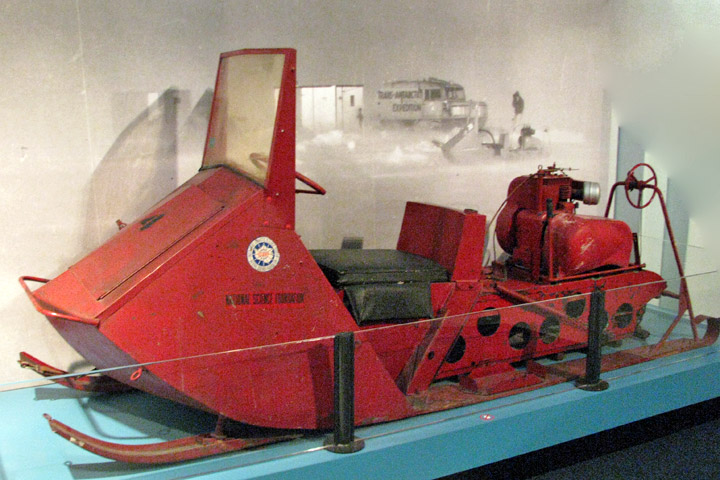

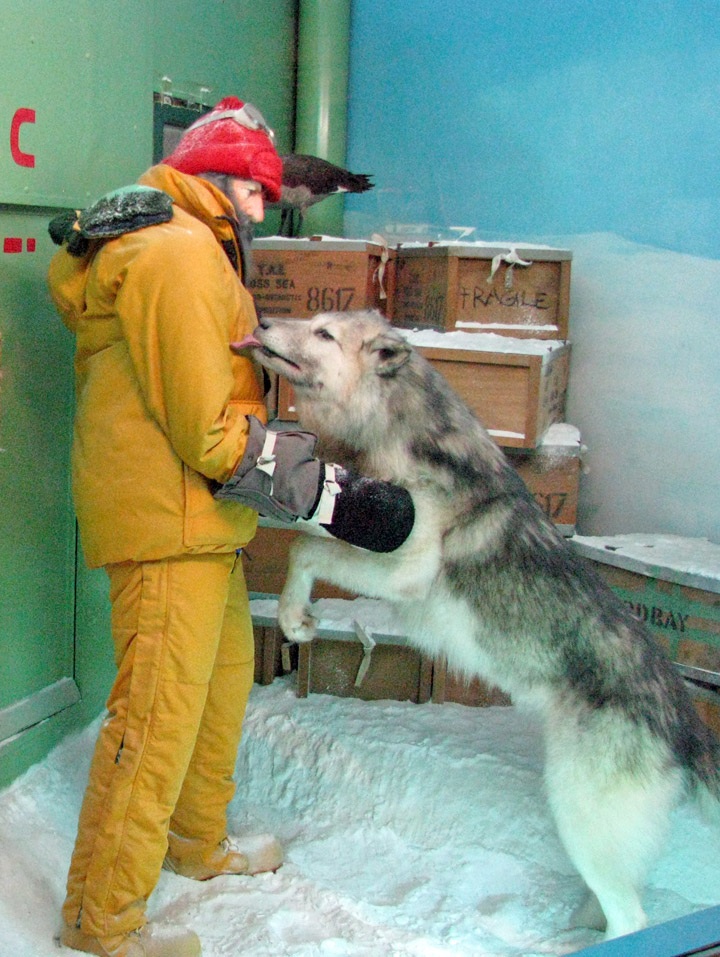
Husky dog
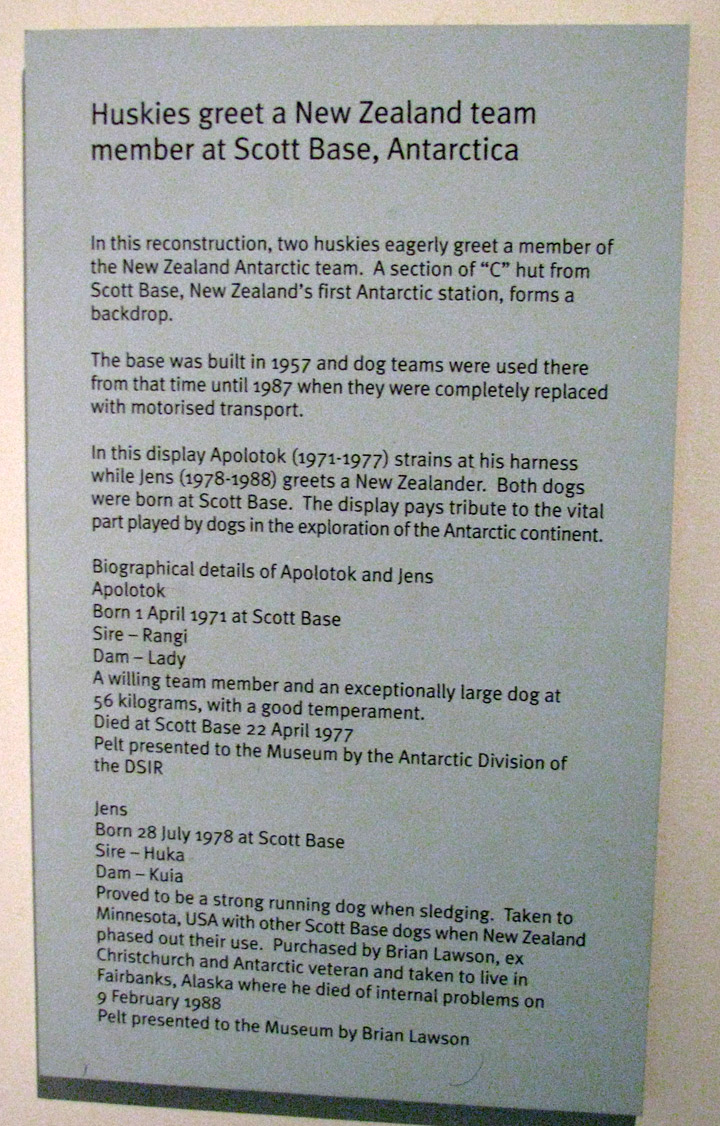
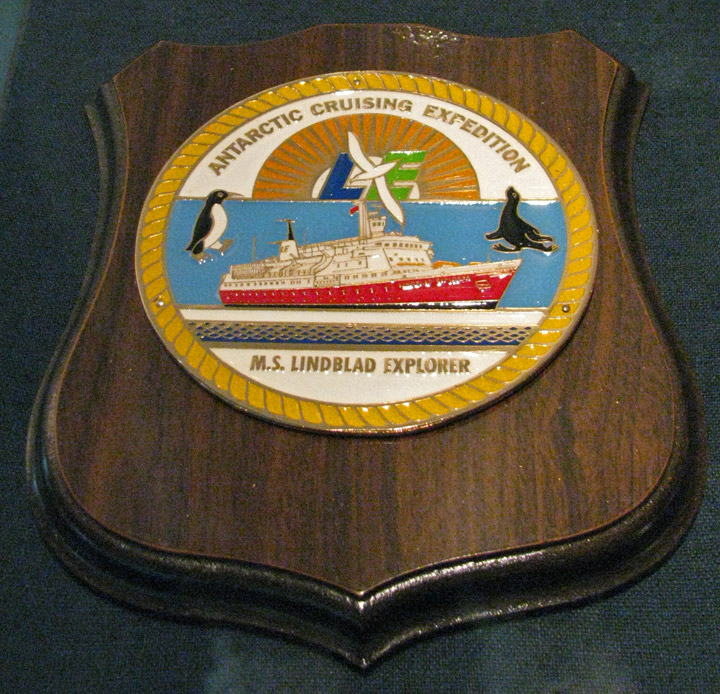
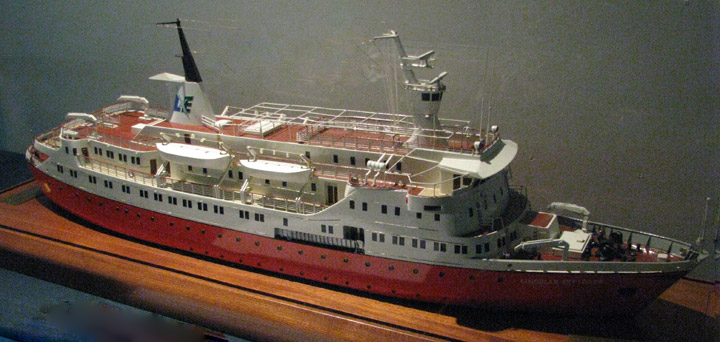
M. S. Lindblad Explorer
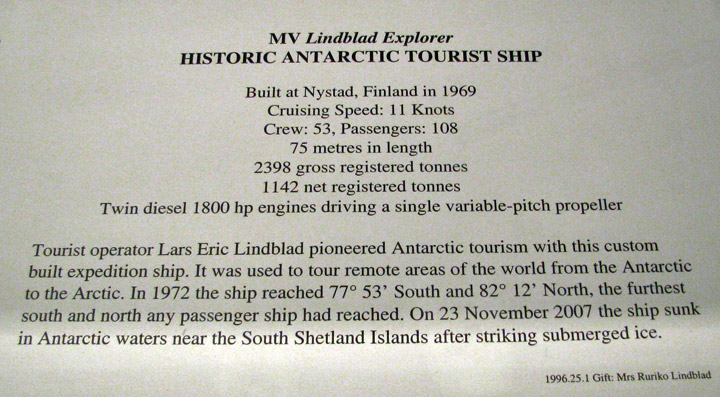
in memorium